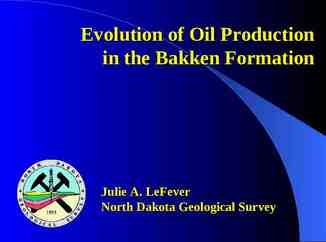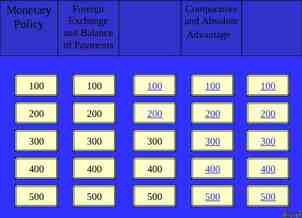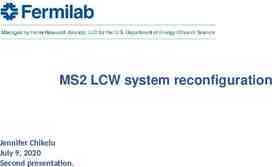An Brief Introduction to Materials Science and Engineering Elaine
32 Slides8.40 MB

An Brief Introduction to Materials Science and Engineering Elaine D. Haberer July 24, 2007 Models & Materials

History of Materials Science & Engineering materials closely connected our culture the development and advancement of societies are dependent on the available materials and their use early civilizations designated by level of materials development initially natural materials develop techniques to produce materials with superior qualities (heat treatments and addition of other substances) July 24, 2007 MATERIALS SELECTION! Models & Materials

Materials Science and Engineering structure arrangement of internal components subatomic atomic microscopic macroscopic (bulk) characterization properties processing method of preparing material performance behavior in a particular application July 24, 2007 Models & Materials material characteristic response to external stimulus mechanical, electrical, thermal, magnetic, optical, deteriorative

Classification of Materials Metals Ceramics & Glasses Polymers good conductors of electricity and heat lustrous appearance susceptible to corrosion strong, but deformable thermally and electrically insulating resistant to high temperatures and harsh environments hard, but brittle very large molecules low density, low weight maybe extremely flexible July 24, 2007 Models & Materials

Classification of Materials: A Few Additional Catagories Biomaterials Semiconductors Composites implanted in human body compatible with body tissues electrical properties between conductors and insulators electrical properties can be precisely controlled consist of more than one material type designed to display a combination of properties of each component hip replacement July 24, 2007 Intel Pentium 4 Models & Materials fiberglass surfboards

Why study materials? applied scientists or engineers must make material choices materials selection – in-service performance – deterioration – economics BUT really, everyone makes material choices! aluminum July 24, 2007 glass Models & Materials plastic

Choice of Medium medium: wood “Wood is a natural material that ties the indoors to the outdoors when it is used A project is a creative 3 dimensional design process You don't need a huge shop space or heavy duty metal working machine tools.” – George J. Haberer July 24, 2007 medium: pastels “I love this rather dirty, dusty medium. Most important factor is that I keep the work behind my bedroom door and in the trunk of my car. Where could I have put all the canvases?” – Jacqueline M. Haberer Models & Materials

structure properties processing performance July 24, 2007 Models & Materials

Levels of Structure structure properties processing performance STRUCTURE (length scale) 0.2 nm July 24, 2007 Models & Materials

Metals Metallic Bond one, two, or three valence electrons valence electrons free to drift through the entire material forming a “sea of electrons” surrounding net positive ionic cores non-directional bond “sea of electrons” ionic cores Properties good conductors of electricity and heat lustrous appearance susceptible to corrosion strong, but deformable July 24, 2007 Models & Materials

Ceramics and Glasses Ionic Bond composed of metallic and non-metallic elements metallic elements give up valence electrons to non-metallic elements all atoms have filled “inert gas” configuration ionic solid non-directional bond Coulombic bonding force Ceramics & Glasses thermally and electrically insulating resistant to high temperatures and harsh environments hard, but brittle July 24, 2007 Models & Materials

Polymers Covalent Bond electrons are shared between adjacent atoms, each contributing at least one electron shared electrons belong to both atoms directional bond H shared electron from hydrogen H C shared electron from carbon H H methane (CH4) Polymers very large molecules low density, light weight materials maybe extremely flexible July 24, 2007 Models & Materials

Levels of Structure structure properties processing performance STRUCTURE (length scale) 0.2 nm 1 nm ? July 24, 2007 0.2-10 nm Models & Materials

Atomic Arrangement: Ordered vs. Disordered Crystalline: atoms are arranged in a 3D, periodic array giving the material “long range order” stacking can effect properties (i.e. ductility) anisotropic materials hexagonal close-packed Non-crystalline or amorphous: atoms only have short-range, nearest neighbor order viscous materials (generally complex formulas) or rapid cooling isotropic materials July 24, 2007 Models & Materials

Levels of Structure structure properties processing performance STRUCTURE (length scale) 0.2 nm 1 nm ? July 24, 2007 0.2-10 nm 1-1000 m Models & Materials

Microstructure Single Crystal Polycrystalline the periodic arrangement of atoms extends throughout the entire sample difficult to grow, environment must be tightly controlled anisotropic materials many small crystals or grains small crystals misoriented with respect to on another several crystals are initiated and grow towards each other anisotropic or isotropic materials July 24, 2007 Models & Materials

Levels of Structure structure properties processing performance STRUCTURE (length scale) 0.2 nm 1 nm ? July 24, 2007 0.2-10 nm 1-1000 m Models & Materials 1 mm

Bulk Properties Mechanical: elastic modulus shear modulus hardness Electrical: conductivity resistivity capacitance Optical: reflectivity absorbance emission July 24, 2007 - Thermal: thermal expansion heat capacity thermal conductivity Models & Materials

Processing Structure Properties Performance Performance Goal: increased strength from a metallic material In actuality, crystals are NOT perfect. There are defects! In metals, strength is determined by how easily defects can move! OFF slow cooling quenching July 24, 2007 Models & Materials

Processing Structure Properties Performance Aluminum Oxide (Al2O3) single-crystal (transparent) July 24, 2007 polycrystalline, fully dense (translucent) Models & Materials polycrystalline, 5% porosity (opaque)

Characterization Techniques structure characterization properties processing performance STRUCTURE (length scale) 0.2 nm 1 nm ? July 24, 2007 0.2-10 nm 1-1000 m Models & Materials 1 mm

Optical Microscopy light is used to study the microstructure opaque materials use reflected light, where as transparent materials can use reflected or transmitted light July 24, 2007 Models & Materials

Electron Microscopy beams of electrons are used for imaging electrons are accelerated across large voltages a high velocity electron has a wavelength of about 0.003 nm the electron beam is focused and images are formed using magnetic lenses reflection and transmission imaging are both possible Scanning Electron Microscopy (SEM) an electron beam scans the surface and the reflected (backscattered) electrons are collected sample must be electrically conductive material surface is observed 200,000x magnification possible July 24, 2007 Transmission Electron Microscopy (TEM) an electron beam passes through the material thin samples details of internal microstructure observed 1,000,000x magnification possible Models & Materials

Scanning Probe Microscopy (SPM) 3D topographical map of material surface probe brought into close proximity of material surface probe rastered across the surface experiencing deflection in response to interactions with the material surface useful with many different types of materials SPM image of a butterfly wing. July 24, 2007 Animation of SPM on epitaxial silicon. SPM image of silica coated gold nanoparticles. Models & Materials SPM image of 70 nm photoresist lines.

X-ray Diffraction x-rays are a form of light that has high energy and short wavelength when x-rays strike a material a portion of them are scattered in all directions if the atoms in the material is crystalline or well-ordered constructive interference can order Intensity Bragg’s Law: 2d sin n Diffraction angle 2 July 24, 2007 Models & Materials

Case Studies July 24, 2007 Models & Materials

Clay aluminosilicate: combination of alumina (Al2O3) and silica (SiO2) that bind water melting temperature of alumina silica layered crystalline structure: kaolinite (Al2Si2O5(OH)4) water fits between layers “clay” has three main ingredients: (1) clay (2) quartz (cheap filler material) (3) flux (lowers melting temperature) Forming: hydroplastic forming slipcasting July 24, 2007 Drying: shrinkage material becomes brittle Models & Materials water O Al O Si O

Clay (cont.) Firing: firing temperature, 900-1400oC (1650-2550oF) permanent physical and chemical changes fuses or melts over large temperature range desired shaped is retained shrinkage due to removal of bound water Sintering: bonds start to form between particles particles are fused into a very porous solid melting has not yet occured July 24, 2007 Vitrification: flux lowers quartz melting temperature quartz particles begin to melt and pull silica out of clay matrix silicates form increasing the viscosity of the melt remaining “alumina rich” clay particles have higher melting temperature final structure: alumina rich particles in silicate glass matrix Models & Materials

Polymer Clay (Sculpey, FIMO) polyvinyl chloride (PVC) long chain or high molecular weight polymer thermoplastic: polymer that melts to a liquid when heated and freezes to a brittle, glassy state when cooled as-purchased a plasticizer is added to keep clay malleable heating the clay decomposes the plasticizer hardening the clay without plasticizer: polymer clay is brittle at room temperature with plasticizer: polymer clay is malleable at room temperature - the plasticizer acts as a lubricant putting space between chains and allowing them to slide passed each other July 24, 2007 Models & Materials

Metal Foil Embossing polycrystalline metal sheet relatively isotropic in-plane ductile material embossing process: plastic or non-recoverable, permanent deformation during embossing bonds are broken with original neighboring atoms and reformed with new neighbors yield strength: stress required to produce a very slight deformation metals a can generally only support 0.5% elongation before plastic deformation occurs materials choice important July 24, 2007 Models & Materials Metal Alloy Yield Strength (MPa) Aluminum 35 Copper 69 Iron 130 Steel 180 Titanium 450

Summary metal ceramic polymer wood structure properties processing performance July 24, 2007 Models & Materials pastels

July 24, 2007 Models & Materials






